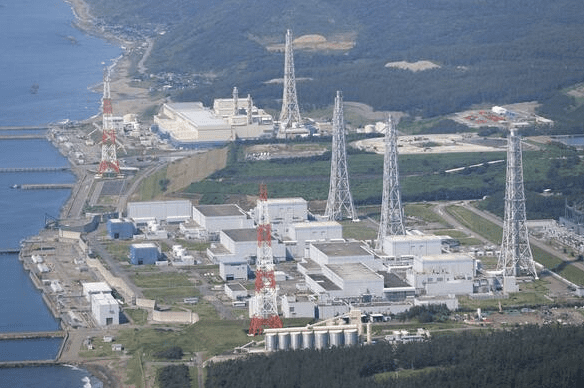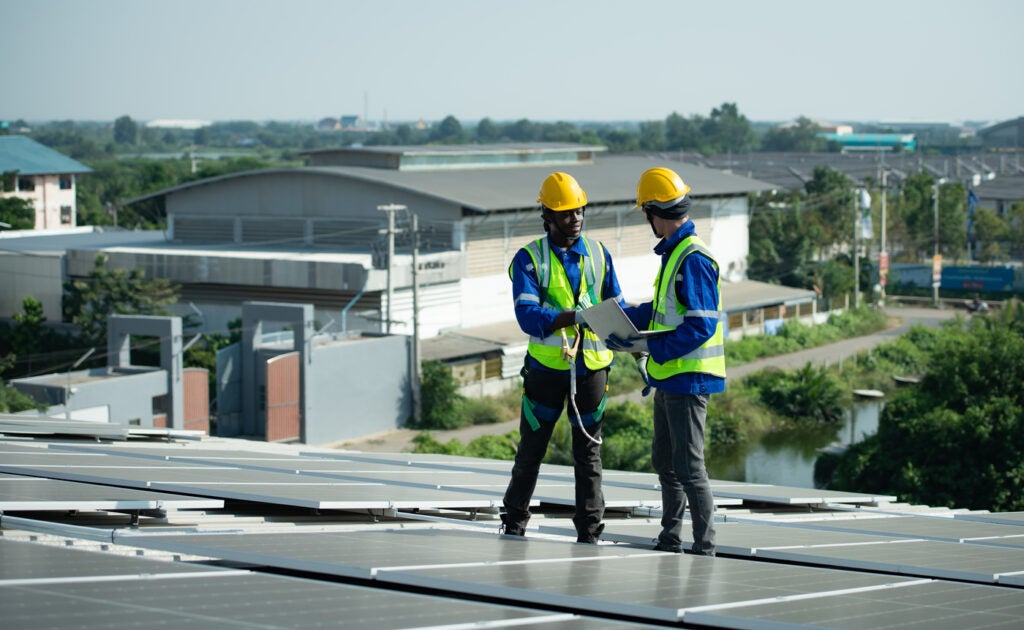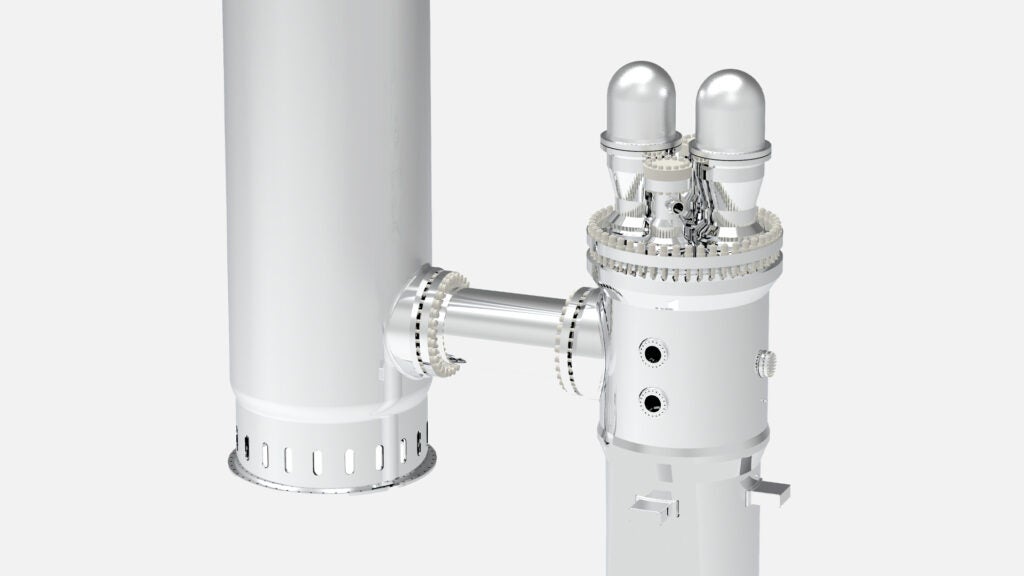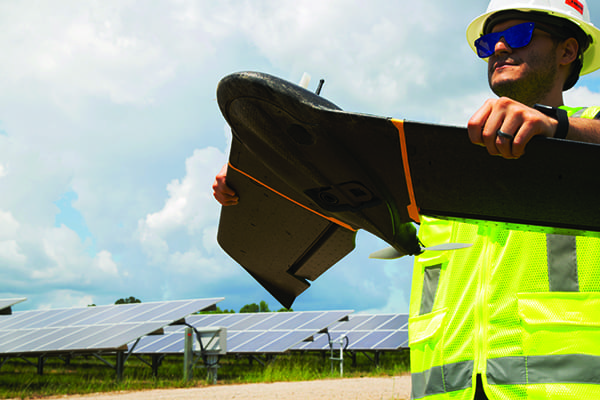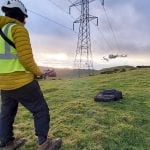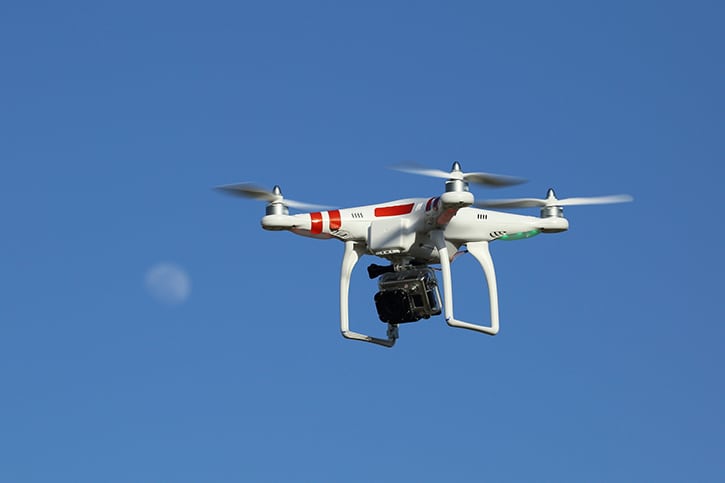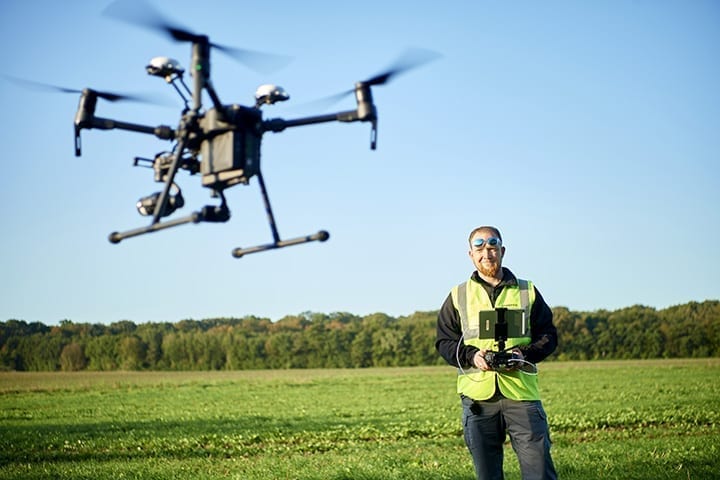Inspecting and monitoring long-distance transmission lines has always been both costly and dangerous for utilities. Networks that stretch across remote, rugged terrain make traditional methods like climbing towers, deploying helicopters, or sending out ground crews resource-intensive and risky for workers. Today, autonomous drones are changing this process by offering a faster, safer, and more cost-effective way to carry out large-scale inspections.
Why Autonomous Drones Are Changing Transmission Line Inspections
Autonomous drones use advanced sensors, GPS, and artificial intelligence (AI) to follow set routes along transmission lines with little human help. This lets them fly beyond what operators can see and cover long stretches of infrastructure that would normally need helicopters or large teams.
According to the International Energy Agency, the global grid will need to double in size by 2040 to meet rising energy demand, which means inspection efficiency will be more important than ever. Autonomous drones are emerging as a critical tool in helping utilities keep pace with this expansion. Research from MDPI Energies shows that unmanned aerial vehicles (UAVs) improve inspection efficiency and support better maintenance planning.
The benefits of autonomous drone inspections include:
- Enhanced Safety. Climbing transmission towers or flying helicopters close to power lines has always carried risk. Autonomous drones reduce the need for workers to be in dangerous environments, lowering the chances of accidents.
- Cost Savings. Helicopter inspections are expensive, costing thousands of dollars per hour. By contrast, drones can perform detailed inspections at a fraction of the price, making them an attractive option for utilities managing tight budgets.
- High-Quality Data Collection. Drones equipped with LiDAR (light detection and ranging), thermal imaging, and high-resolution cameras collect detailed data, allowing engineers to spot issues such as corrosion, vegetation encroachment, or overheating components before they cause failures.
- Faster Turnaround Times. With automated flight routes and real-time data transmission, engineers can review inspection results far more quickly. Tasks that once took weeks in the field can now be completed in just a few days.
Real-World Example: Drone Inspections in Practice
Utilities are already deploying autonomous drones for transmission line inspections. For example, Sky Scan Surveys has assisted projects by capturing detailed imagery across challenging terrain (Figure 1), giving utilities reliable inspection data more quickly without deploying large teams. This approach highlights how drones can improve both the safety and efficiency of managing extensive infrastructure.
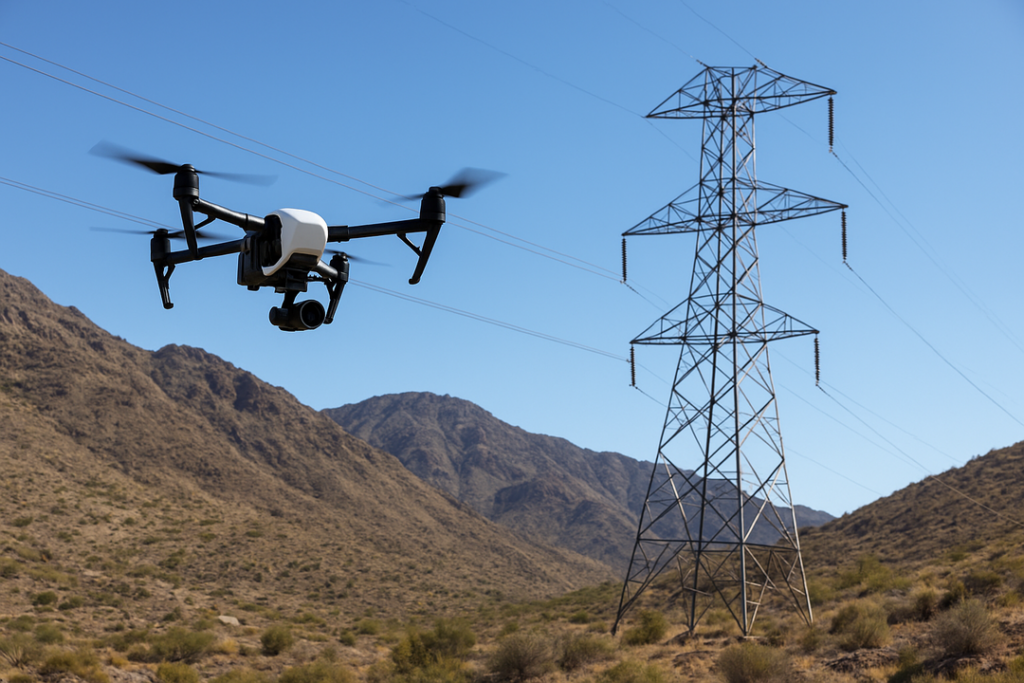
Overcoming Regulatory Challenges
Regulations have long limited the widespread use of drones. Flying beyond visual line of sight is restricted in many regions for safety reasons. But rules are starting to change. The Federal Aviation Administration in the U.S. has granted several waivers for utilities, and Europe is making similar progress through the European Union Aviation Safety Agency. As regulations continue to develop, more utilities will be able to fully benefit from autonomous inspections.
Integration with AI and Predictive Maintenance
Drone inspections provide valuable insights through both the data and imagery they collect. By combining drone data with artificial intelligence, utilities can detect early signs of equipment wear and prioritize maintenance tasks. The Electric Power Research Institute notes that autonomous drones deliver a steady stream of information, supporting predictive maintenance and helping prevent outages. Case studies from Optelos demonstrate how integrating drone-collected data into maintenance planning can significantly improve operational efficiency.
Supporting the Energy Transition
As renewable generation increases, transmission infrastructure is becoming even more critical. Transmission lines now need to reach deeper into remote areas to connect solar farms, wind turbines, and other renewable energy sources to the grid. Autonomous drones are ideally suited for these locations, where deploying inspection crews can be expensive and logistically difficult.
Experts writing in POWER magazine highlight that maintaining and upgrading transmission networks is vital for a resilient energy system. Drone technology supports this effort by allowing utilities to inspect and maintain lines more efficiently while minimizing environmental impact.
The Role of Drones in Modern Grid Maintenance
Future transmission line inspections will probably combine drones, AI, predictive analytics, and digital twin technology. Instead of reacting to problems, utilities will be able to monitor their networks constantly, using predictive analytics and automation to deal with issues early. Drones will be at the heart of this system, collecting data and carrying out inspections.
Autonomous drones are no longer experimental. They are proving their value in real-world transmission projects by reducing risk, lowering costs, and speeding up data collection. As regulatory frameworks evolve and technology advances, their role will only expand, making them an essential part of the future grid.
—Paul Harty is director and drone pilot with Sky Scan Surveys.

